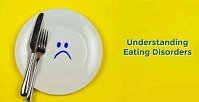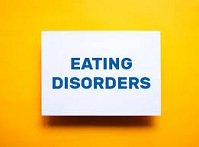
Eating Disorders: A Brief Guide

For a lot of adolescents, especially teenagers, being aware of their diet is very important. A lot of people are generally very aware and self-conscious about how they look, and as a result, they pay close attention to their bodies.
This condition holds particularly true for those people who are going through the period of puberty, and as a result are facing significantly increased social pressures as well as dramatic changes in their physique. Sadly however, this consciousness can turn in to a very strong obsession, as they become more and more concerned about their bodies, and ultimately, this obsession turns into an eating disorder. Common eating disorders such as bulimia nervosa or anorexia nervosa can result in significant changes in the overall weight of a person, can also cause interferences with a person’s daily activities and more importantly, they can have a permanent impact upon a person’s health.
One of the simplest ways by which parents can help their children is building their self-esteem and encouraging healthy attitudes towards their appearance as well as their dietary intake. As a parent, if you are concerned that your child is developing an eating disorder (the signs usually become evident), you should immediately intervene and look for medical care as soon as possible.
Information about eating disorders
Commonly, eating disorders generally arise due to negative thoughts, self-critical assessments as well as negative feelings towards food as well as the weight of a person’s body. As a result, people stop eating, which causes disruptions in the normal bodily functions and cause hindrances in a person’s daily activities. Even though eating disorders are generally very common among girls, they can also have an effect on boys. The frequency with which eating disorders occur among children in the US is very high; it is expected that 1 or 2 out of every 100 students is likely to have an eating disorder. The most common eating disorders are anorexia and bulimia. The sad part is that a large number of children generally try their best to hide their eating disorders from their families for many months and even years.
Those who have anorexia develop a very strong fear of gaining weight, and their idea about their body shape and size generally becomes distorted.
Because of this, people with anorexia try their hardest to eat as little as possible, in order to reduce and maintain a very low body weight. People with anorexia are unlikely to eat a proper meal.
Those who have bulimia are generally into purging and binge eating. This means that even though their weight continues to fluctuate significantly, it hardly ever reaches the low levels which are common among people suffering from anorexia. A number of compulsive activities can be involved in both eating disorders, such as use of laxatives as well as self-induced vomiting. Those with anorexia are usually very thin, while those with bulimia generally maintain a normal weight, or might be overweight.

Leave a Reply